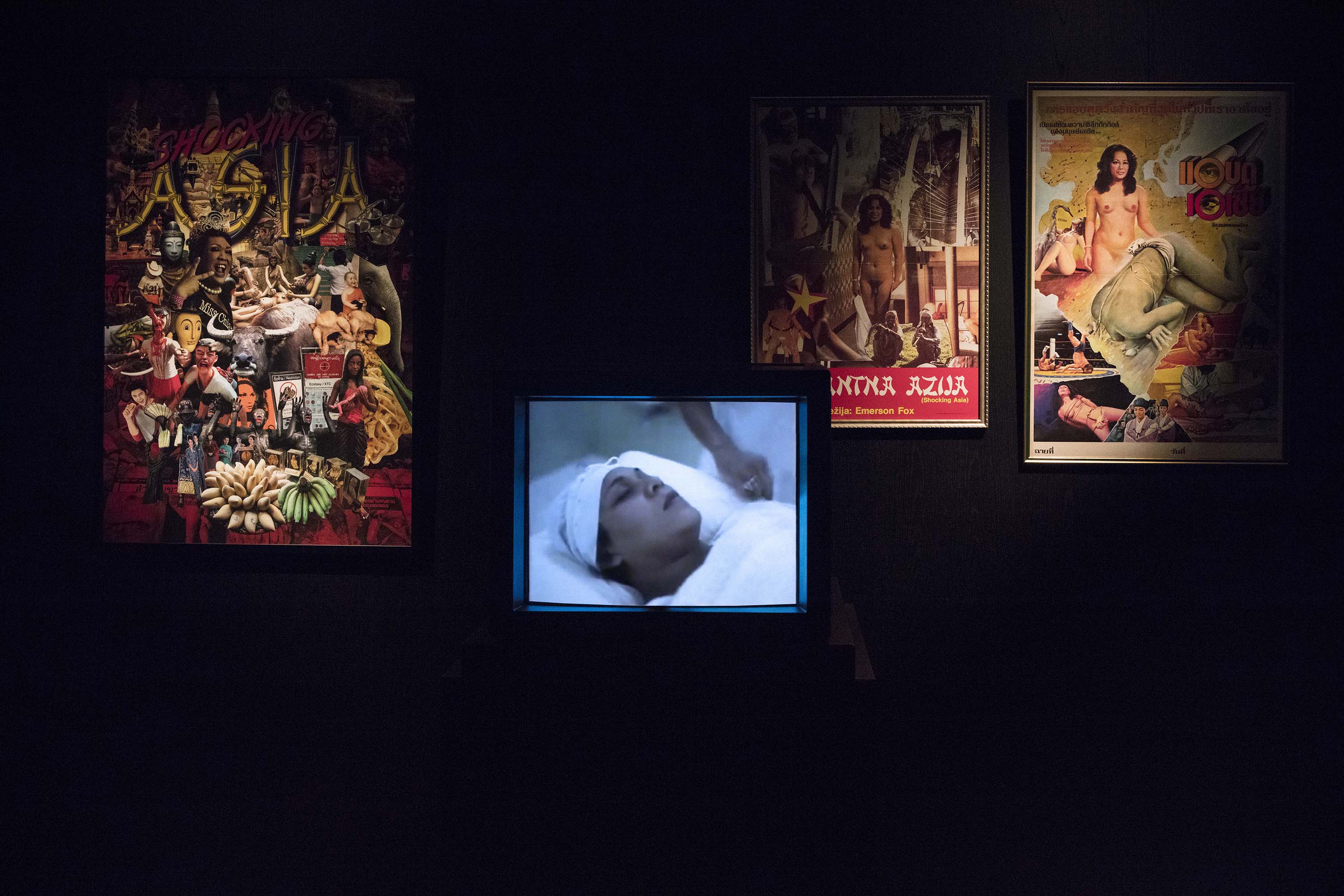Shows
C. Spencer Yeh’s “Shocking Asia”


When Gualtiero Jacopetti, Paolo Cavara and Franco Prosperi released Mondo Cane (1962), an exploitative documentary that portrayed non-Western cultures around the world as primitive, its wild popularity in Europe spawned a genre of faux-ethnographic “shockumentary” films that exploited communities of color for entertainment and spectacle. The divisive clips of exoticized cultures came to stand for the barbarity of entire races, from dog-eating in Taipei to manhunting rituals in New Guinea. Mondo spinoffs include Shocking Asia (1974), a more dedicated look at cultural traditions specifically in Asia. Interdisciplinary artist and composer C. Spencer Yeh riffs off this predatory practice with his own ironic sequel at Hong Kong’s Empty Gallery. The seven-hour-long film interrogates his own gaze as a Brooklyn-based, Taiwanese-born individual traveling through Southeast Asia, asking: What does it mean for the East Asian diaspora to look east?
Yeh’s prologue opens with the title “Shocking Asia” shown in hot pink and bamboo graphics in the style of a chop-suey font, marrying cartoonish Orientalist visuals with sardonic humor. Given Yeh’s own heritage, this opening sequence begins to question the differences between Orientalism and disidentification. From there, we follow Yeh through Malaysia, Myanmar, Singapore, and Thailand. While the original Shocking Asia from 1974 manipulates the audience with dramatic music and narration rooted in colonialist logic, Yeh discards these contrived mechanisms to instead study how grotesque otherness might be manufactured. When Yeh journeys to the Drug Elimination Museum in Yangon, for example, one begins to see how cultural imagery can be produced by the state with an ulterior motive rather than embody the people it governs. When Yeh trains his lens on plastic cannabis plants, animatronic dioramas, bilingual signs with broken English, and other propagandistic devices, we feel the plight and deprecation of disingenuously recorded histories—an Orientalist specter that haunts Yeh even when traveling near his origins.
Occasionally, Yeh points a critical eye at tourists making their own fictions. While visiting popular sites, many of which contain aspects such as gift shops that reflect their amenability to tourism, Yeh explains, “You can’t really go there without shooting tourists, so they become inadvertent subjects too. This becomes an ethnography of tourism.” During a segment at Shwedagon Pagoda, also in Yangon, we see a 2,500-year-old sacred site embellished with flashing LED lights that now also serves as a backdrop for travelers to create their personal fantasies on camera. As a young Caucasian man points his lens toward his partner, she folds her hands to her lips in mock prayer. Scenes such as these capture tourism’s highly subjective and transformative interpretations of culture, especially in locales long subjected to a history of unfair denigration by Western audiences—a predicament that Yeh is unable to condemn or didactically utilize as a transient visitor from the West himself. How does the diaspora reconnect with our roots without engaging in the often violent process of looking and replicating the intrusive actions of the white Western pioneer? Yeh complicates usual politics of either refusing the gaze or returning the gaze, searching instead for an alternative—perhaps more empathetic or accountable—means of gazing.
While tourists often hunger for an “authentic” experience, Yeh reveals the ways in which such authenticity is forged. His films, complete with movie posters and advertisements that promise the same titillating visual splendor of the original Mondo films, focus instead on the production and presentation of the visual. Yeh’s sequel rejects our penchant for violence and gore that the original capitalized on with a tightly controlled, decidedly average portrayal of Asia that collapses cultural distance. Moreover, the film guards subjects that have been unfairly vilified under the white Western gaze, invoking a line often muttered by those who ask curious passersby to move along: There is nothing to see here.
C. Spencer Yeh’s “Shocking Asia” is on view at Empty Gallery, Hong Kong, until February 10, 2018.







